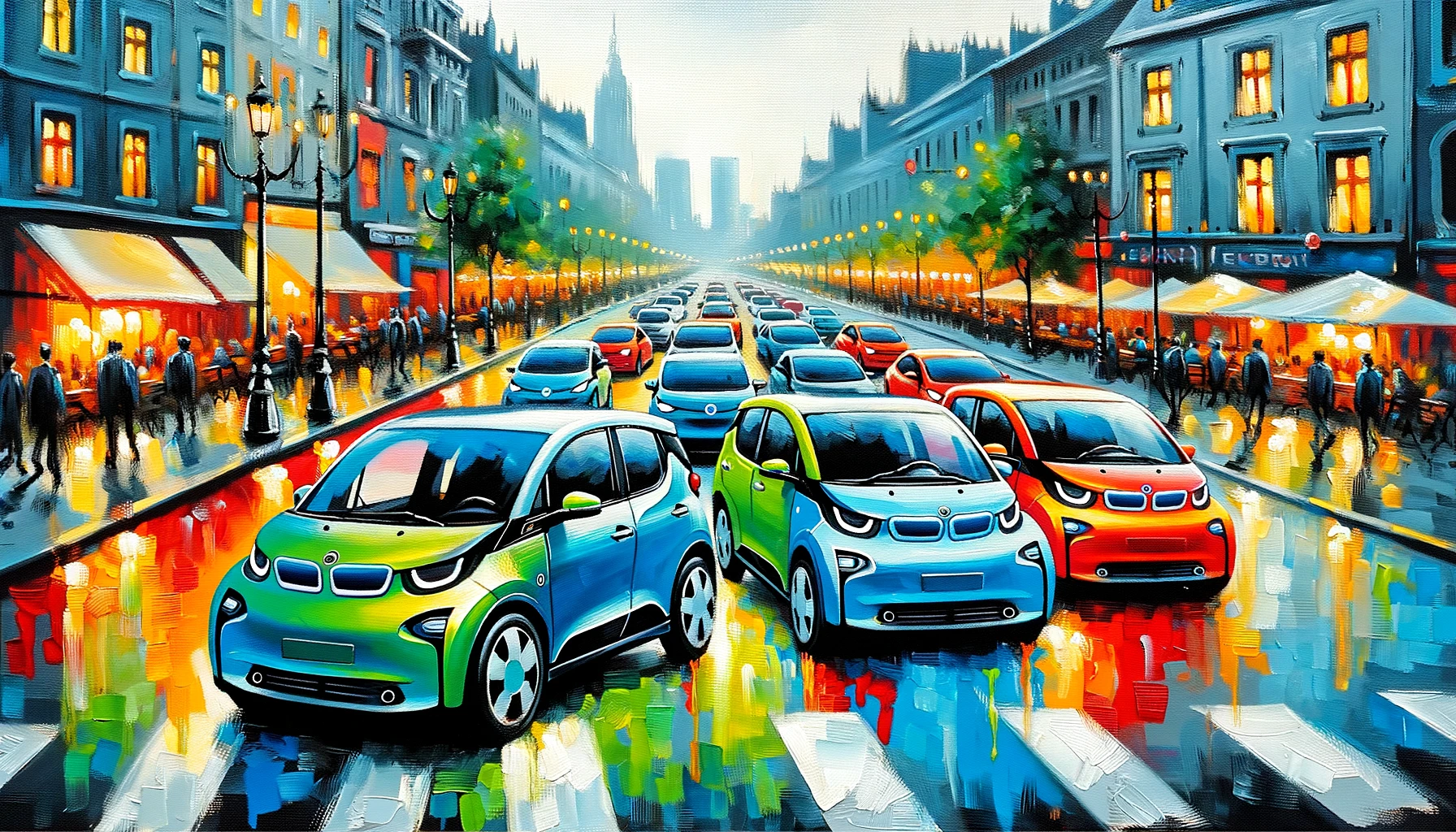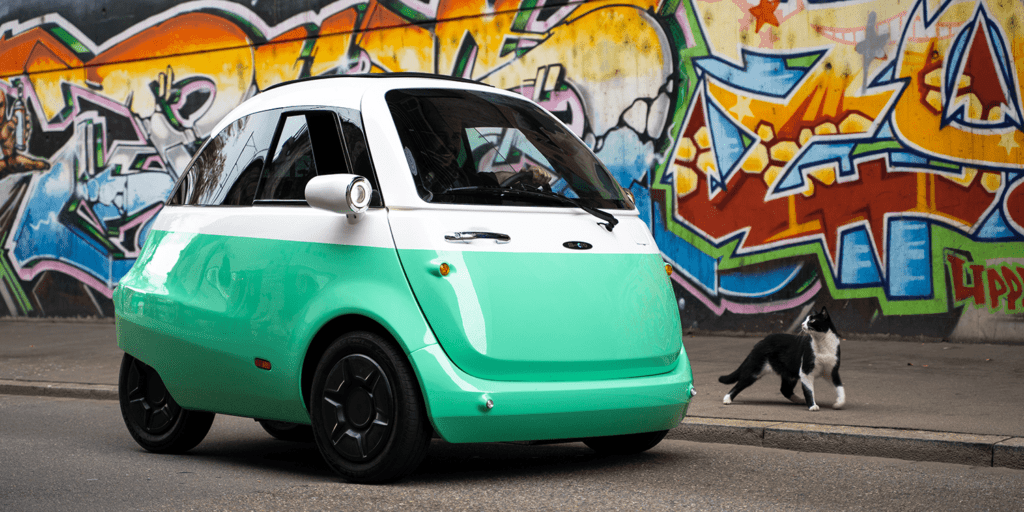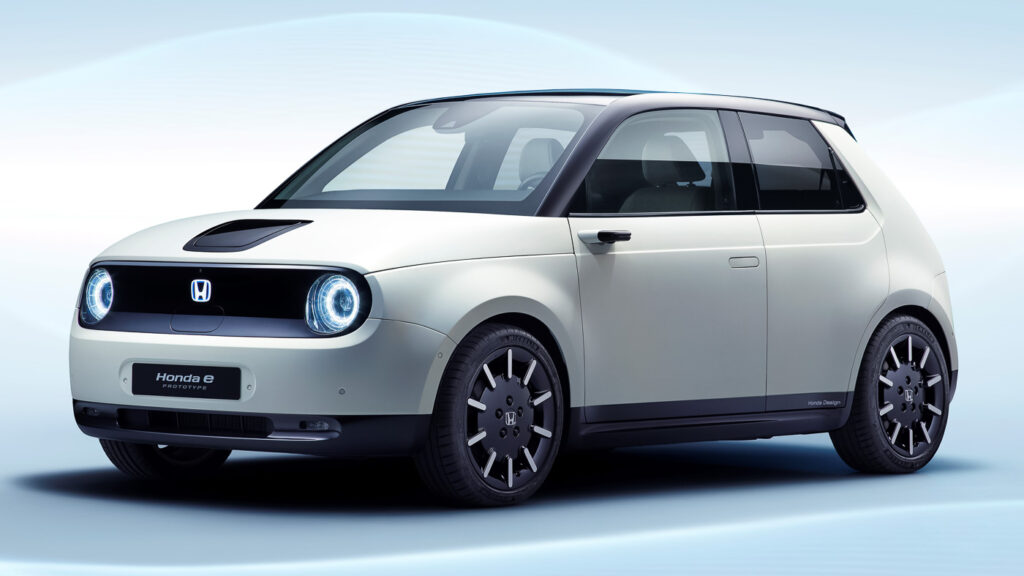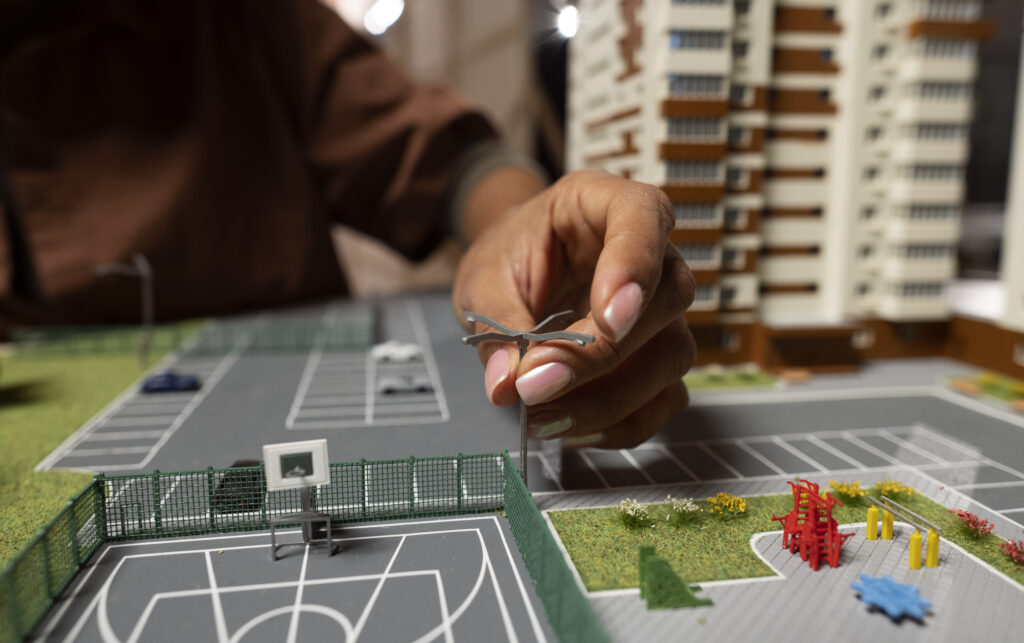
Did you know that sales of microcars have surged by 120% in the past year alone? These compact EVs are revolutionizing urban commuting with their eco-friendly features and space-saving designs. From bustling city streets to tight parking spots, microcars are swiftly becoming the go-to choice for modern drivers seeking efficiency without compromising on style.
As more consumers prioritize sustainability and practicality, the rise of microcars is reshaping the automotive industry landscape. With advanced technology and sleek aesthetics, these compact EVs offer a glimpse into the future of transportation, where innovation meets convenience seamlessly. Get ready to explore how these tiny yet mighty vehicles are driving big changes in mobility worldwide.
Table of Contents
Why Microcars Are Gaining Popularity

Urban Space Limits
Microcars are gaining popularity due to their ability to maximize limited urban parking spaces. These compact electric vehicles offer a practical solution for addressing challenges related to urban infrastructure. With cities becoming more crowded, microcars provide an efficient way to navigate and park in tight spaces.
- Utilizing microcars optimizes urban parking.
- Addressing urban infrastructure challenges with compact EVs.
Rising Fuel Costs
Amidst increasing fuel prices, microcars stand out as cost-effective commuting solutions. Consumers are turning to these compact EVs to save on fuel expenses, making them a popular choice in the current market. The growing demand for microcars is closely tied to the impact of rising fuel costs on daily transportation needs.
- Microcars offer savings on fuel expenses.
- Growing demand for compact EVs due to rising fuel costs.
Eco-Friendly Choices
The surge in interest towards microcars stems from their low carbon footprint and eco-friendly features. Opting for these compact electric vehicles allows individuals to make environmentally conscious decisions while enjoying the convenience of modern transportation. Microcars play a vital role in promoting sustainable mobility options for a greener future.
- Choosing microcars for their environmental benefits.
- Contributing to sustainable transportation choices with microcars.
Tech Advancements
The rise of microcars is accompanied by continuous technological innovations in their design. Modern compact EVs integrate cutting-edge technology that enhances their overall performance and user experience. From advanced safety features to smart connectivity options, microcar models are evolving with the latest tech trends.
- Latest technological innovations in microcar design.
- Integration of cutting-edge technology in modern microcar models.
Key Features Making Microcars Attractive
Compact Size
Microcars boast advantages due to their compact size, making them perfect for maneuvering through urban traffic. Their small dimensions offer agility and flexibility, allowing drivers to navigate tight spaces with ease. The compact size of microcars is beneficial for parking in crowded city areas, where finding a spot can be challenging.
Energy Efficiency
One of the key features that make microcars attractive is their energy-efficient nature. These vehicles are designed to optimize energy consumption, resulting in an extended driving range on a single charge. The emphasis on energy efficiency plays a significant role in the growing popularity of compact EVs among environmentally conscious consumers.
Innovative Design
Microcars stand out in the automotive industry due to their unique and innovative designs. From futuristic aesthetics to practical space-saving solutions, these vehicles showcase creativity in design. The innovative design elements incorporated in microcars contribute to their appeal among individuals looking for a distinctive and modern mode of transportation.
Smart Tech Integration
The integration of smart technologies in microcars enhances the overall driving experience for users. From advanced infotainment systems to connectivity features, smart tech adds convenience and functionality to these compact EVs. The inclusion of smart tech features not only improves the driving experience but also aligns microcars with the technological advancements seen in larger electric vehicles.
Microcars as Urban Transport Solutions
Ease of Parking

Microcars revolutionize urban transport by offering convenient parking solutions in congested areas. Their compact size allows drivers to effortlessly navigate and park in tight spaces. Addressing the challenge of parking scarcity, microcars provide a practical solution for urban dwellers.
Traffic Decongestion
Embracing microcars is a strategic move to alleviate traffic congestion in bustling cities. These compact EVs play a vital role in improving traffic flow and reducing congestion on busy streets. By integrating microcars into urban transport systems, cities can enhance overall traffic operations for smoother commutes.
Lower Emissions
Microcars stand out for their low emissions profile, contributing significantly to reducing air pollution in urban settings. The adoption of compact EVs helps address environmental concerns by promoting cleaner transportation alternatives. With reduced emissions, microcars play a crucial role in creating healthier and more sustainable urban environments.
Accessibility
Microcars play a pivotal role in enhancing accessibility for urban commuters of all backgrounds. These compact EVs provide inclusive mobility options, ensuring that diverse populations have easy access to transportation. By increasing the availability of microcars, transportation accessibility is greatly improved for individuals living in urban areas.
Innovations Shaping Compact EVs
Battery Tech
Electric vehicles (EVs) rely on cutting-edge battery technologies to power their compact frames. The latest advancements in battery tech have significantly enhanced the performance of microcars, extending their range and improving efficiency. These innovations play a crucial role in driving the evolution of compact EVs towards greater sustainability and practicality.
- Lithium-ion batteries dominate the EV market due to their high energy density.
- Solid-state batteries are emerging as the next frontier, promising even better performance.
Autonomous Features
Microcars are now equipped with advanced autonomous features that revolutionize the driving experience. These technologies not only enhance safety by reducing human error but also offer unparalleled convenience for urban commuters. The integration of autonomous driving capabilities signals a promising future for the microcar industry, paving the way for fully self-driving vehicles.
- Adaptive cruise control and lane-keeping assist are common autonomous features in microcars.
- Enhanced sensors and AI algorithms enable precise navigation and obstacle detection.
Connectivity
Modern microcars boast a plethora of connectivity features, transforming them into smart vehicles. From seamless smartphone integration to real-time navigation systems, connectivity enhances both the driving experience and overall functionality of compact EVs. These connected services cater to urban dwellers seeking efficient and tech-savvy transportation solutions.
- In-car Wi-Fi hotspots and remote vehicle monitoring are popular connectivity options.
- Integration with smart home devices allows for seamless transitions between home and car environments.
Safety Measures
Safety remains a top priority in microcar design, with manufacturers implementing robust safety measures to protect occupants. Compact EVs feature advanced driver assistance systems, collision avoidance technologies, and reinforced structures to ensure optimal safety in urban driving conditions. By prioritizing safety features, microcar makers aim to instill confidence in consumers regarding the reliability of these eco-friendly vehicles.
- Crash avoidance systems like automatic emergency braking enhance accident prevention.
- Rigorous testing procedures guarantee compliance with stringent safety standards.
Future Trends in Compact EVs
Design Evolution
Microcars have undergone significant design evolution, from basic compact structures to futuristic, aerodynamic shapes. This evolution mirrors changing consumer tastes towards sleeker, more stylish vehicles. The incorporation of advanced materials and technologies has revolutionized microcar aesthetics.
Innovations in microcar design are pivotal in redefining urban mobility. Features like modular interiors, smart connectivity options, and energy-efficient components are reshaping the future of compact EVs. These design advancements not only enhance user experience but also contribute to environmental sustainability.

Network Expansion
The expansion of microcar networks in urban areas is crucial for enhancing accessibility and availability. With a growing emphasis on sustainable transportation solutions, the proliferation of charging stations and shared mobility services supports the widespread adoption of compact EVs. Improved network coverage encourages more individuals to switch to microcars, reducing carbon emissions.
The increased network growth plays a vital role in accelerating the adoption of microcars among urban dwellers. Easy access to charging infrastructure and efficient sharing platforms make owning and using compact EVs more convenient and cost-effective. As microcar networks expand, they become an integral part of urban transportation systems.
Policy Support
Policy support plays a fundamental role in promoting the use of microcars as a sustainable transportation option. Governments worldwide are implementing regulations and incentives to drive the adoption of compact EVs. Subsidies, tax benefits, and infrastructure investments are essential for creating an enabling environment for the growth of microcars.
Supportive policies not only influence consumer decisions but also stimulate innovation in the electric vehicle sector. By fostering a favorable regulatory framework, policymakers can spur technological advancements and market competitiveness in the microcar industry. Continued policy backing is crucial for achieving long-term sustainability goals.
Consumer Preferences
Consumer preferences act as key drivers shaping the demand for microcars. Factors such as affordability, range capabilities, charging infrastructure, and design aesthetics influence consumers’ choices in selecting compact EVs. Manufacturers are adapting to these preferences by offering customizable features and eco-friendly options tailored to consumer needs.
The dynamic nature of consumer preferences necessitates continuous innovation in the microcar market. By staying attuned to evolving trends and feedback from users, manufacturers can develop cutting-edge solutions that cater to diverse consumer demands. Understanding and responding to consumer preferences are paramount for sustaining growth in the compact EV segment.
Safety in Focus for Compact EVs
Structural Integrity
Microcars prioritize structural integrity to ensure safety and durability on the road. The robust construction of these vehicles plays a crucial role in enhancing their reliability. With sturdy materials and design, compact EVs are built to withstand urban driving conditions effectively.
When it comes to structural integrity, microcars boast advanced engineering techniques that focus on safety. The emphasis is on creating a strong framework that can protect occupants in various scenarios. By reinforcing key areas, manufacturers enhance the overall safety of these compact electric vehicles.
Advanced Driver-Assistance Systems
Compact EVs come equipped with advanced driver-assistance systems (ADAS) to elevate the driving experience. These technologies not only improve driving comfort but also play a vital role in enhancing safety on the roads. From lane-keeping assistance to automatic emergency braking, ADAS features make urban commuting safer and more convenient.
Incorporating cutting-edge technology, microcars leverage ADAS functionalities for optimal performance. By integrating sensors and cameras, these systems provide drivers with real-time assistance and alerts. This proactive approach helps prevent accidents and ensures a smoother driving experience in congested city environments.
Pedestrian Safety Features
Microcars place a strong emphasis on pedestrian safety, incorporating features specifically designed to protect those outside the vehicle. By prioritizing pedestrian protection, compact EVs contribute to overall road safety. From enhanced visibility to impact-absorbing structures, these safety elements aim to reduce accidents involving pedestrians.
With innovative design elements, microcars integrate pedestrian detection systems that alert drivers of potential risks. These features work alongside ADAS technologies to create a comprehensive safety network. By focusing on pedestrian safety, manufacturers enhance the overall impact of compact electric vehicles on urban mobility.
Emergency Response Tech
Modern microcars are equipped with advanced emergency response technologies that ensure rapid assistance during critical situations. From automatic crash notifications to emergency braking systems, these technologies play a crucial role in mitigating risks on the road. By enabling quick responses, compact EVs enhance overall safety for both occupants and other road users.
Emergency tech features in microcars are designed to provide swift responses when needed most. By integrating intelligent systems that can assess emergencies accurately, these vehicles offer peace of mind to drivers and passengers alike. With an emphasis on safety and responsiveness, compact electric vehicles set new standards for emergency preparedness on the roads.
Vision for Less Congested Cities
Urban Planning Changes

Microcars have a significant impact on urban planning and infrastructure due to their compact size. These vehicles require less space, leading to potential changes in city layouts. With the rise of microcars, cities are reevaluating zoning regulations and parking requirements to accommodate these smaller vehicles efficiently. This shift towards compact EVs influences urban development by promoting sustainable transportation solutions and reducing traffic congestion.
- Microcars influence urban development by encouraging the creation of dedicated lanes or parking spaces tailored to their dimensions.
- Urban planners are adapting strategies to integrate microcars into existing infrastructure, promoting eco-friendly transportation options within cities.
Mobility as a Service
The concept of mobility as a service (MaaS) is gaining traction in the microcar industry, offering convenient and flexible transportation options for urban dwellers. MaaS models provide users with access to various modes of transport through a single platform, including microcar rentals and ride-sharing services. Microcars play a crucial role in shaping the future of mobility services by providing affordable and sustainable transportation solutions for city residents.
- MaaS models in the microcar industry enhance transportation flexibility by offering on-demand access to compact EVs.
- The integration of microcars into MaaS platforms promotes efficient and seamless mobility experiences for users.
Infrastructure Development
Infrastructure development plays a vital role in supporting the adoption of microcars within urban environments. Investments in charging stations, service centers, and maintenance facilities are essential for facilitating the growth of compact EV usage. Enhancing infrastructure for microcars ensures that users have convenient access to charging points and other necessary services, promoting the widespread adoption of eco-friendly vehicles.
- Infrastructure investments support the expansion of microcar usage by providing essential services such as charging stations and repair facilities.
- Improving infrastructure for microcars enhances user convenience and encourages more individuals to transition towards sustainable transportation options.
Public Transport Integration
The integration of microcars with public transportation systems offers a holistic approach to urban mobility, promoting multi-modal solutions for city commuters. Compact EVs complement public transport networks by providing first-mile/last-mile connectivity options and enhancing overall accessibility within urban areas. By integrating microcars with public transit systems, cities can offer residents diverse transportation choices that cater to their specific needs.
- Microcar integration with public transport networks enables seamless connections between different modes of transportation, enhancing overall mobility experiences.
- Promoting multi-modal solutions through microcar integration encourages sustainable travel practices and reduces reliance on traditional car ownership models.
Microcars Making Their Mark
Market Growth
The microcar market has been steadily growing, especially in urban areas where space is limited. Consumers are increasingly drawn to these tiny cars for their compact size and eco-friendly nature. With the rise of electric vehicles (EVs), the demand for small cars has surged, leading to a significant presence in the automotive industry. These compact EVs offer a practical solution for short commutes and city driving, contributing to the reduction of emissions and congestion.
One of the key factors propelling the expansion of the microcar market is the increasing focus on sustainability and environmental consciousness among consumers. The shift towards electric cars has opened up new opportunities for carmakers, with many investing heavily in developing innovative models to cater to the growing demand. Government incentives and regulations promoting electric car markets have further boosted sales of microcars globally.
The future looks promising for microcar manufacturers, with projections indicating continued growth in the sector. As technology advances and battery efficiency improves, the appeal of compact EVs is expected to soar. This presents a lucrative opportunity for passenger car companies to tap into the burgeoning market and establish a strong foothold in the evolving automotive landscape.
Consumer Stories
Real-life stories from microcar users highlight the practicality and convenience of owning these medium cars. Urban dwellers find immense value in navigating crowded city streets with ease, thanks to their compact size. Commuters share how owning a microcar has transformed their daily commute, saving both time and money while reducing their carbon footprint.
Consumers benefit significantly from driving compact EVs in urban settings due to their agility and efficiency. The ability to maneuver through tight spaces and park effortlessly makes microcars an ideal choice for city living. Users also appreciate the cost-effectiveness of these vehicles, as they consume fewer resources compared to larger conventional cars.
Personal narratives underscore the advantages of microcar ownership, emphasizing not only the environmental benefits but also the practicality of these vehicles in everyday life. From running errands to commuting to work, microcars offer a versatile transportation solution that aligns with modern urban lifestyles.
Industry Recognition
In recent years, carmakers specializing in microcars have garnered notable industry recognition for their contributions to sustainable mobility. Awards highlighting innovation and excellence in design have been bestowed upon leading manufacturers in acknowledgment of their efforts towards creating efficient and environmentally friendly vehicles.
Microcar companies have achieved significant milestones in advancing compact EV technology, pushing boundaries in design and performance. These achievements have not gone unnoticed, with industry accolades serving as a testament to their commitment to driving positive change within the automotive sector. By prioritizing sustainability and innovation, microcar manufacturers continue to set new benchmarks for excellence.
Future Outlook
Looking ahead, the future of microcars appears promising as technological advancements pave the way for enhanced performance and capabilities. Anticipated innovations such as improved battery life and faster charging times will further elevate the appeal of compact EVs among consumers. With ongoing research and development efforts focused on enhancing total car sales, we can expect a wave of cutting-edge microcar models entering the market soon.
Predictions suggest that microcars will play an increasingly vital role in shaping urban mobility solutions by offering efficient alternatives to traditional gas-powered vehicles. As cities strive towards creating more sustainable transportation systems, compact EVs are poised to lead this transformation by providing eco-friendly options for commuters worldwide. The continued growth and evolution of microcars signal a promising future for sustainable urban transportation solutions.
Closing Thoughts
Compact EVs, especially microcars, are revolutionizing urban transportation with their space-saving design and eco-friendly features. As cities become more congested, these small yet powerful vehicles offer a practical solution for navigating crowded streets while reducing emissions. The safety advancements and innovative technologies incorporated into microcars make them not only efficient but also reliable modes of transport for the future. Embracing the trend of microcars can lead to a more sustainable and convenient way of commuting, benefiting both you and the environment.
Make a conscious choice to explore the world of compact EVs and consider integrating a microcar into your lifestyle. By opting for these futuristic vehicles, you contribute to building greener and less congested cities while enjoying the convenience and efficiency they offer. Start your journey towards a more sustainable urban lifestyle today!
Related Article:
Featured Image courtesy of DALL-E by ChatGPT
